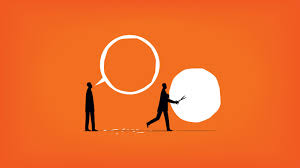Hello!
What is the Sales Funnel?
The sales funnel is a fundamental part of a marketing strategy with which every marketer should be familiar. A sales funnel creates a pathway to conversion by first catching the attention of interested parties and guiding them towards a sale.
Sales funnels are referred to as such because the process resembles a funnel structure: the top of the funnel representing fair-reaching awareness, and the narrowing of the funnel represents the subsequent stages of interest and purchasing, until the very bottom, where the focus turns to customer retention.
Why Tailor Your Copywriting to Each Stage of the Sales Funnel?
Potential consumers are in varying mindsets throughout the sales funnel, and copy must be strategically fine-tuned to resonate with those at each stage. Pushing to close a sale too soon can result in turning off a would-be customer, wasting time, money, and energy. Sales copy throughout each stage of the marketing funnel must be done with finesse in order to earn each transaction.
What are Some Copywriting Techniques For Each Stage of the Sales Funnel?
 Understanding how best to tailor copy in each stage of the sales funnel requires the juxtaposition of sales tactics and consumer psychology.
Understanding how best to tailor copy in each stage of the sales funnel requires the juxtaposition of sales tactics and consumer psychology.
Even the most engaging copy won’t generate leads if it’s marketed to the wrong people. Marketers must have an in-depth understanding of their customer demographics and be able to interpret data to strategically write copy that coaxes potential consumers further down the sales funnel.
Pre-Funnel: Defining Your Target Audience To find your audience, you can rely on the age-old ‘who, what, where, when, and why’ method.
● Who: To write copy that will engage your target audience on even the broadest level, you must first know who your audience is. Even if you have a product or service that appeals to the general population, key demographic factors such as age, income, familial status, and geographic location influence a consumer’s buying habits. For the best results, it is essential to tailor your copy to the demographic most likely to purchase your product.
● What: A key part of writing copy for every stage of the marketing funnel is to appeal to your audience’s needs. Focus on the general benefits of your products or service; simply put, what’s in it for them.
 ● Where: Consider where your audience may be looking for your exact product or service and write your copy based on this information. The ‘where’ aspect of writing for marketing funnels requires you to do research on where your target market is searching for information.
● Where: Consider where your audience may be looking for your exact product or service and write your copy based on this information. The ‘where’ aspect of writing for marketing funnels requires you to do research on where your target market is searching for information.
● When: Understanding precisely when your target audience is looking for your products is integral. Even if your product or service is not one that is meant for immediate application, write your copy in a way that details why it is essential that your product or service is essential to have within the audience’s reach.
● Why: A marketer must have a firm grasp of why their product is essential to their target to write copy that compels a potential customer to move further down the sales funnel.
Once you understand the who, what, where, when, and why of your target audience, you can begin writing copy for the awareness stage of the sales funnel.
Awareness
Copy that is written for the awareness stage should touch on why your product is necessary, without overt or pushy sales language.
The awareness stage of the sales funnel is designed to hit a broad audience and generate leads. This, however, doesn’t mean haphazardly putting together content with the widest appeal. Keeping the details of your target audience in mind, write copy that engages readers while not pushing too hard to close an immediate sale.
Copy that is considered too ‘pushy’ at this stage is unlikely to earn you any customers; address pain points and why your product or service solves these problems, and for who. The awareness stage is built for just that -- awareness. Position yourself as a source for solving your audience’s issues, and those who want to move forward, will.
 Examples of mediums on which awareness copy is published are:
Examples of mediums on which awareness copy is published are:
● Blog posts
● Social media posts
● PPC advertisements
● Print advertisements
Interest
The second phase in the sales funnel is for those who have been ‘filtered out’ by the awareness stage. An interested party is one who has clicked on your website , made an inquiry, or followed you on social media. In this stage, you want to establish expertise within your industry. Offer more in-depth content that showcases the full range of benefits of your product or service, still avoiding overly enthusiastic sales pushes. Content written for the interest stage of the sales funnel should be written confidently and authoritatively.
 A few examples of where copy written for the interest portion of the sales funnel include:
A few examples of where copy written for the interest portion of the sales funnel include:
- Ebooks
- Podcasts
- Webinars
Decision
The consideration phase is one that takes some finessing. The decision phase is reached when a person is fully aware of their options (this includes your competition) and is ready to make a choice.
Writing copy for the decision part of the sales funnel is more persuasive, and requires a ‘show, don’t tell’ approach. Virtually no purchases are entirely logic-based, even for the most mundane products like gardening gloves or floor cleaner. Cater to emotions while highlighting results. For example, if someone is searching for a new kitchen table for a growing family, their decision will not be entirely based on the number of chairs, size, and durability. People, by nature, attach emotion to objects. Copy that detailed the potential memories made around the table with fun family dinners and game nights with friends is more likely to cement a decision rather than stale descriptions or basic specs.
 The copy written for the decision portion of the sales funnel might be found in:
The copy written for the decision portion of the sales funnel might be found in:
- In-store signage
- Abandoned cart emails
- Free trial verbiage
Action
If your potential customer has made it this far down the sales funnel, they have made the decision to go through with their purchase. Writing copy for the action phase of the sales funnel is extremely important, as it is the make-or-break of the conversion. Don't be too pushy or salesy though. If you write a sales page or a sales email, you can write it in such a way that people will actually like reading it.
There are two particular areas a digital marketer must pay attention to when writing action phase sales funnel copy: the purchase and the confirmation. Copy that is written for these two aspects of the conversion must assure the customer that they have made the right choice; writing effective action phase copy helps prevent buyer’s remorse and reduces the chances of a return and refund. Be gracious, reassuring, and somewhat congratulatory; your customer now owns your product. Showcase what they can look forward to.
At both the point of purchase and the confirmation of purchase, copy should include customer service-driven language. Be clear on where the purchaser can inquire about troubleshooting or assistance. Be thorough with your refund policy, and provide as much contact information as possible to maintain transparency, professionalism, and exemplary customer service.
 Copy written for the action phase may be found on:
Copy written for the action phase may be found on:
- Checkout or cart pages
- Confirmation pages and emails
- User manuals
- Product packaging and inserts
- Receipts or invoices
Retention
 The sale isn’t over once the customer has made a purchase. Writing effective copy intended to retain customers is integral to repeat customers and referrals. The cost of acquiring a new customer is roughly five times higher than retaining a customer; it is worth the effort to craft marketing materials meant for existing customers.
The sale isn’t over once the customer has made a purchase. Writing effective copy intended to retain customers is integral to repeat customers and referrals. The cost of acquiring a new customer is roughly five times higher than retaining a customer; it is worth the effort to craft marketing materials meant for existing customers.
When writing copy designed for retention, use both personalization and exclusivity. You want those on your customer list to feel as valuable as they are; send out special deals and customer surveys to show your customers that you value their input. Customers who interact with brands they’ve purchased from are far more likely to become brand-loyal than those who never hear from a company again.
Examples of writing for the retention phase of the sales funnel include:
● Email marketing and newsletters
● Mailers
● SMS marketing campaign copy
● Feedback forms and surveys
Be Intentional with Your Sales Funnel Copy
 No phase of the sales funnel is more important than others. Each stage of the sales funnel is an essential piece of an overall marketing strategy, and each must be meticulously crafted.
No phase of the sales funnel is more important than others. Each stage of the sales funnel is an essential piece of an overall marketing strategy, and each must be meticulously crafted.
Some general tips for writing sales funnel copy include:
● Maintain consistency in tone and voice in each phase
● Double-check for spelling errors or grammatical inaccuracies (your sales funnel copy is often your first impression!)
● Include clear calls to action that create a clear pathway to the next stage in the funnel
Also read:
- Medical Billing Coding Software – The Most Frequent Questions Answered By MWDN Experts
- Things to Look for in a Product Development Services Vendor
- How to Find the Right Technical Co-founder
Improve Your Copywriting Techniques for Each Part of the Sales Funnel – It’s Worth it
Writing sales copy can be challenging, but crafted with attention to both the small details and the larger picture, sales funnels can be extremely effective. Well-crafted copy can make or break your business; take time to do thorough research, adapt, pivot, and fine-tune after failures and build from your success. Nearly every aspect of your digital marketing is based around or includes copy in some way; dedicate the time to writing it in the most powerful way possible.
Thank you!
Subscribe to our newsletter! Join us on social networks!
See you!






